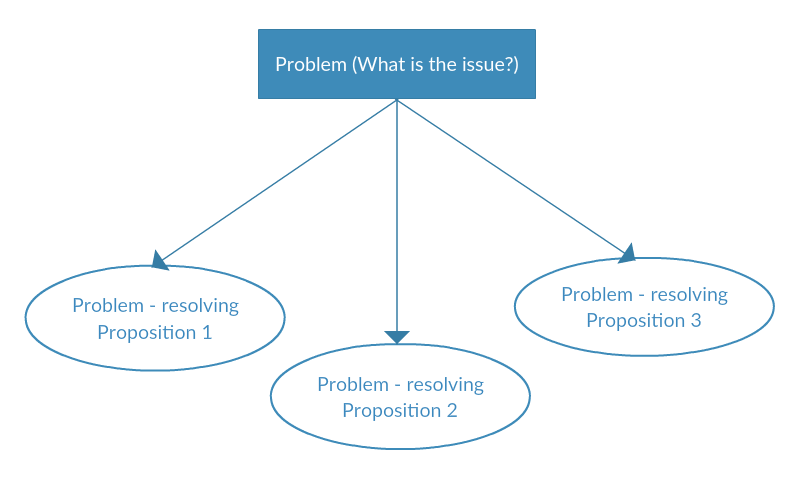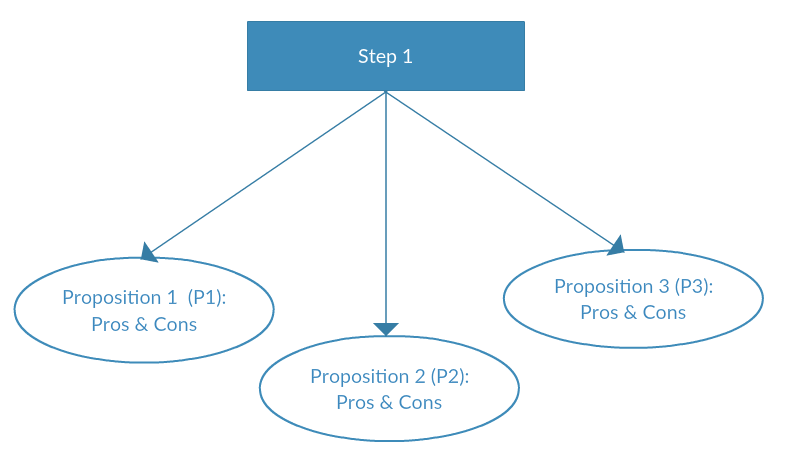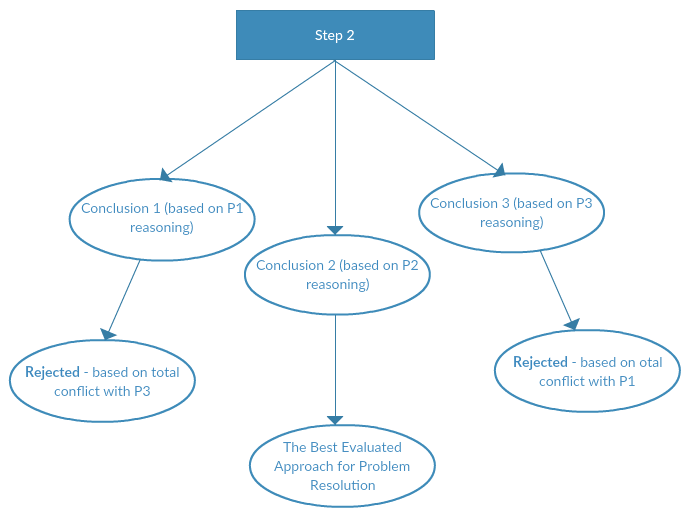If you’re constantly faced with the dilemma of solving complicated problems in your personal or professional life, you can reap many benefits from the technique of decision mapping.
These can be likened to detailed mind maps, which address every aspect of the situation at hand (and at length). And by extension, they allow you to make a decision with a heightened degree of confidence and assertiveness.
In this ‘How to’ tutorial, we’ll discuss some of the basic steps involved in constructing a decision map. By the end of this piece, you will know:
- What is Decision Mapping?
- The Advantages of Using Decision Maps
- How to Draw a Decision Map (using pen & paper)
- How to Avoid a Common Drawing Mistake
So scroll down below, and learn to plot your very own decision map today!
You can also check out the Ultimate Guide to Concept Maps: From Its Origin to Concept Map Best Practices
What is Decision Mapping?
Decision Mapping is a critical-thinking approach, in which a graphical ‘map’ (most commonly in the form of a Decision tree diagram) is drawn visually to highlight the various deliberative routes of reasoning undertaken to arrive at a certain decision.
It is particularly handy in complex, multi-factor scenarios where important decisions have to be made – and where mere (instinctive) introspection on a problem is likely to lead to the decision-makers’ cognitive faculties becoming overwhelmed.
Broadly speaking, the technique is based on the 21st century (technology-incorporating) elaboration of Benjamin Franklin’s ‘Moral Algebra’ principle, which he famously used to resolve various contentious political issues during his presidency.
When plotting a decision map, there is no ‘one size fits all’ standardized way of going about the process. But tree diagrams (as has been mentioned above), and their closely resembling ‘line & node’ diagrams, are some of the most common ways in which these can be plotted.
In situations of an individualistic (personal nature), a pen & paper diagram – of the kind detailed in this piece – can do. But for decision-making in large-scale organizational settings, the use of mapping software is generally recommended.
The Advantages of Using Decision Maps
1) Decision mapping, as such, is a great technique for laying down the bare facts pertaining to a situation, along with the pros and cons of taking alternative decisions which are geared towards problem-resolution.
These arguments are further supplemented by further (issuing) arguments, so as to arrive at a singular, well-reasoned, conclusion. In this way, any hint of a cognitive bias on the part of the decision-maker(s) is duly identified and rationalized against.
In some ways, the technique can be likened to the Socratic method of hypotheses-reduction and ‘truth’ identification.
2) Decision mapping also helps in significantly improving the quantitative-front on which the ‘right’ decisions are made (i.e. it increases their frequency). It helps in achieving this goal by refining the thinking-methodology used in arriving at decisions.
3) When made properly, decision maps can also be used as ‘evidence’, in order to show that the decision made using them is based on sound principles of judgement. In this sense, they can prove particularly handy in the event of decision taking the wrong turn towards a failure in problem-resolution; as a result of various unforeseen, external factors.
4) Decision mapping reduces the psychological stress that is normally associated with complex decision-making and makes its practitioners more confident in their conflict-resolution approaches.
5) In team settings geared towards addressing a particular problem, decision mapping helps to keep all the members on the same page. This guarantees that all alternative points-of-view (proposed by individual team members) are fully recorded graphically, and considered. This ‘shares the burden’ of the decision-making process; with credit or blame equally apportioned to all participating members in the event of a success or a failure.
6) Based on the charting processes involved, decision mapping is a highly recommended conflict-resolution approach for tackling important problems that affect many stakeholders. Some good examples of where this technique can prove the most helpful include, decision-making at the national or MNC (Multinational Corporation) levels.
How to Draw a Simple Decision Map| How to Map Out Decision-Making
Follow these 4 steps to draw your very own decision map. Pay particular attention to the basic elements which need to factor in any decision map construction process. These include:
- Problem Identification & Alternative Proposition Enumeration
- Pros and Cons Analysis of each suggested proposition
- Detailed Arguments and Possible Sub-Arguments extrapolated from each proposition line
- Elimination of ‘Equal Weight’ Contradictory Conclusions
- Decision Finalization – on the most satisfactory (and reasoned to be the least ‘failure prone’) conclusion
Step 1: Problem Identification & Alternative Proposition Enumeration
This first step entails a listing down (in written or graphical form) of all possible propositions that will enable problem-resolution.
Step 2: Pros and Cons Analysis
Detail the Pros and Cons that would accrue from following up on each proposition line.
Step 3: Detailed Arguments (and Sub-Arguments)
Deliberate and write down all the arguments and viewpoints that arise after a contemplation on the pros and cons of each proposition line.
Step 4: Elimination & Finalization
Consider, for example, that P1, after undergoing a detailed Pros & Cons Analysis (in Step 2) and detailed argumentative reasoning (Step 3), comes up with a conclusion of equal weight – yet ‘completely contradictory’ actionable scope – to P3 (which has undergone the same rigorous process of evaluation).
In this case, we will cancel out both the P1 and P3 conclusions, and consider P2 as the best course of action to take – in order to resolve the problem at hand.
Avoiding a Common Drawing Mistake
The above-illustrated process can be thought of as a ‘principle diagram’, and by sticking close to its basic precepts, you can tackle any decision-making challenges that come your way.
But when plotting a decision map, be wary of making too many extensions of a proposition line – as these will lead to the ‘muddled thinking’ which needs to be avoided. Otherwise, there would be no difference between a decision mapping exercise, and a session of deliberative-thinking conducted internally (in one’s head), or verbally.
The whole purpose of a decision map is to prevent any bouts of cognitive ‘human’ confusion from affecting the complex deliberation process geared towards problem resolution. And so it is very important for all practitioners to remain fixated on this essential goal at all times.
Author Bio:
Ian Thompsan is a critical thinker, game theorist, and business strategy advisor, currently engaged in a university-funded research project on the link between Human Emotional Cognition and Organizational Productivity Dynamics. His employment history includes stints in working for Spectrum and Miramax Industries.







